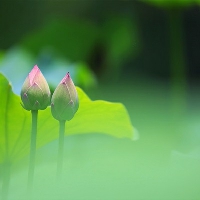Some schools enroll students with a comprehensive score of cultural score and professional score, with cultural score and professional score accounting for 50% respectively; Some schools have 40% cultural scores and 60% professional scores; Some schools are admitted from high to low according to their professional scores after passing the school line according to their culture.
What is the comprehensive score formula of college entrance examination for art students
Comprehensive score of fine arts and music=candidate's cultural conversion score multiplied by 50% plus professional score multiplied by 7.5 multiplied by 50%;
Comprehensive score of dance, film and television performance=candidate's cultural conversion score multiplied by 40% plus professional score multiplied by 7.5 multiplied by 60%;
Comprehensive score of broadcasting and hosting=candidate's cultural conversion score multiplied by 80% plus professional score multiplied by 7.5 multiplied by 20%;
Comprehensive score of broadcasting and hosting art=candidate's cultural conversion score × 70% plus professional score × 30%.
Radio and television director, film and television photography and production, photography, and recording art are selected according to cultural conversion.
"Culture converted score" is the total score of the college entrance examination divided by the admission control score of a batch of ordinary undergraduate students in the province where the examinee is located × 100. Jiangsu, Xinjiang, Yunnan, Hainan and other provinces are converted according to the specific proportional coefficient of each province.
It is different from place to place. Take Beijing as an example: the calculation formula of comprehensive score of fine arts: comprehensive score of undergraduate=score of unified examination of fine arts/300 × 750 × 50%+score of cultural courses in college entrance examination × 50%, comprehensive score of higher vocational (junior college)=score of unified examination of fine arts/300 × 450 × 50%+score of cultural courses in college entrance examination × 50%, and the result is rounded to an integer.
What is the calculation method of college entrance examination scores
Some schools enroll students with a comprehensive score of cultural score and professional score, with cultural score and professional score accounting for 50% respectively; Some schools have 40% cultural scores and 60% professional scores; Some schools are admitted from high to low according to their professional scores after passing the school line according to their culture.
But the premise of both is that you must have passed the art undergraduate course; Some provinces also have a unified professional examination, and 32 independent colleges and universities need to take separate school examinations for their majors. That is, these provinces recognize the unified examination results, and the professional unified examination results can be used in most colleges and universities in the province.
The undergraduate comprehensive score of art students is 750 points, and the specific conversion method is: comprehensive score of art=total score of examinees × 50%+professional score × 7.5 × 50%. The comprehensive score of art students in the junior college is 450 points, and the specific conversion method is: comprehensive score of art=total score of examinees × 50%+professional score × 4.5 × 50%.
Before the implementation of the reform of the art examination, most colleges and universities would adopt this admission method, which spells out the examinee's professional courses. At present, colleges and universities that adopt this method are often found in professional art colleges and universities. For example, most of the 29 independent undergraduate art colleges and universities adopt this method. If the quality of the examinee's professional courses is excellent, and the cultural courses can pass the provincial level, the enrollment rate will be higher if the colleges and universities that choose this admission method apply for the exam.

